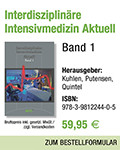

59. Jahrgang - Supplement Nr. 17 - November 2018
Stüve-Wiedemann syndrome
Stüve-Wiedemann syndrome
Stüve-Wiedemann Syndrome (SWS) is an autosomal recessively inherited disorder characterized by congenital skeletal dysplasia, and life-threatening autonomic nerve dysfunction. SWS is caused by a mutation in the Leukemia Inhibitory Factor Receptor gene (LIFR;151443) on chromosome 5p13.1. SWS has been reported in different ethnic groups including Europeans, North Africans, Gypsies and Arabs. However, it seems to be particularly common in the United Arab Emirates.
Clinical characteristics of SWS include bowing of the long bones (bent-bone dysplasia), camptodactyly, deformities of joints and extremities, facial dysmorphism, hypotonia, growth retardation, and difficulties with feeding and swallowing.
The clinical course is generally complicated by unexpected hyperthermic episodes, respiratory insufficiency and feeding difficulties. Therefore it has a poor life expectancy and most patients die in early life.
SWS is caused by a mutation in the Leukemia Inhibitory Factor Receptor gene (LIFR;151443) on chromosome 5p13.1 [4]. It is particularly common in the United Arab Emirates population with a prevalence of 0.5/10,000 births. [5].
Clinical characteristics of SWS include bowing of the long bones (bent-bone dysplasia), hypertelorism, micrognathia, single transverse palmar crease, trismus, camptodactyly, deformities of joints and extremities, facial dysmorphism, hypotonia, growth retardation, and difficulties with feeding and swallowing [6,7]. Neurological features resemble dysautonomia with temperature instability, reduced pain sensation, and absent corneal reflexes; however, intellectual capabilities are normal.
The clinical course is generally complicated by unexpected hyperthermic episodes, respiratory insufficiency and feeding difficulties [7,8]. Therefore it has a poor life expectancy and most patients die in early life. SWS may also be associated with cardiovascular abnormalities, especially pulmonary hypertension due to arterial wall abnormality [9].











